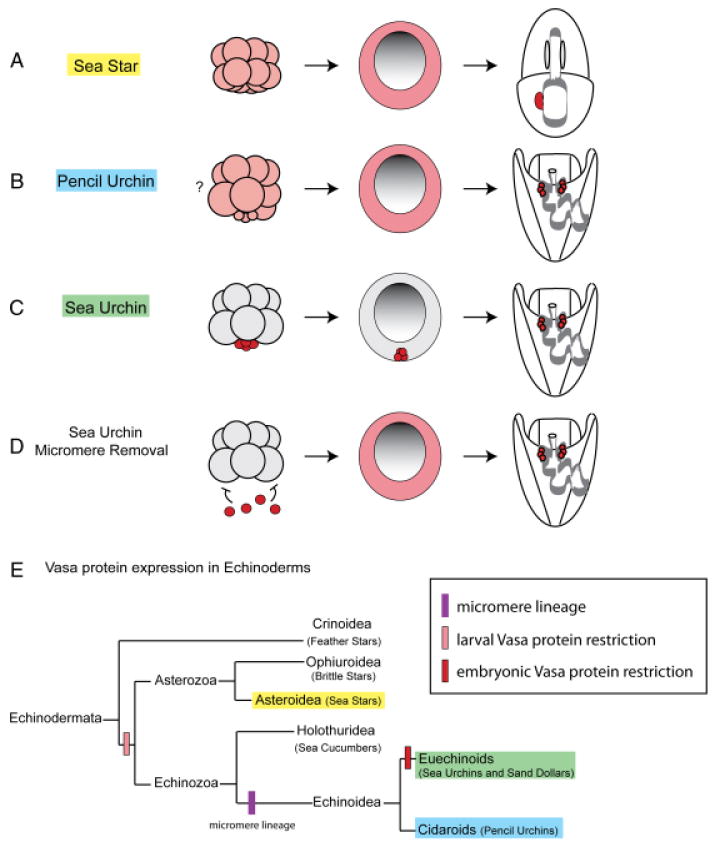Fig. 8.

Vasa protein expression is restricted to the small micromeres in the sea urchin, but is inducible in other lineages. (A and B) In the pencil urchin and the sea star, Vasa protein is uniformly distributed during embryogenesis (pink) and then selectively enriched in the larva. (C) In the sea urchin, Vasa protein accumulates selectively in the micromeres and then the small micromeres (red). (D) Removing the micromeres from a 16-cell sea urchin embryo leads to uniform upregulation of Vasa protein (pink). This suggests that Vasa-positive micromeres normally send a repressive signal to the rest of the embryo that inhibits Vasa protein accumulation. Furthermore, the micromere-deleted sea urchin is capable of growing into a normal adult, suggesting that it reverts to an ancient mechanism of vasa regulation, used by the pencil urchin and the sea star, to restrict Vasa protein accumulation in the larva. (E) Vasa protein expression patterns presented here support the hypothesis that larval Vasa protein restriction is a basal trait among echinoderms, and that early restriction of Vasa protein to the micromere lineage is a derived feature of Euechinoids.
